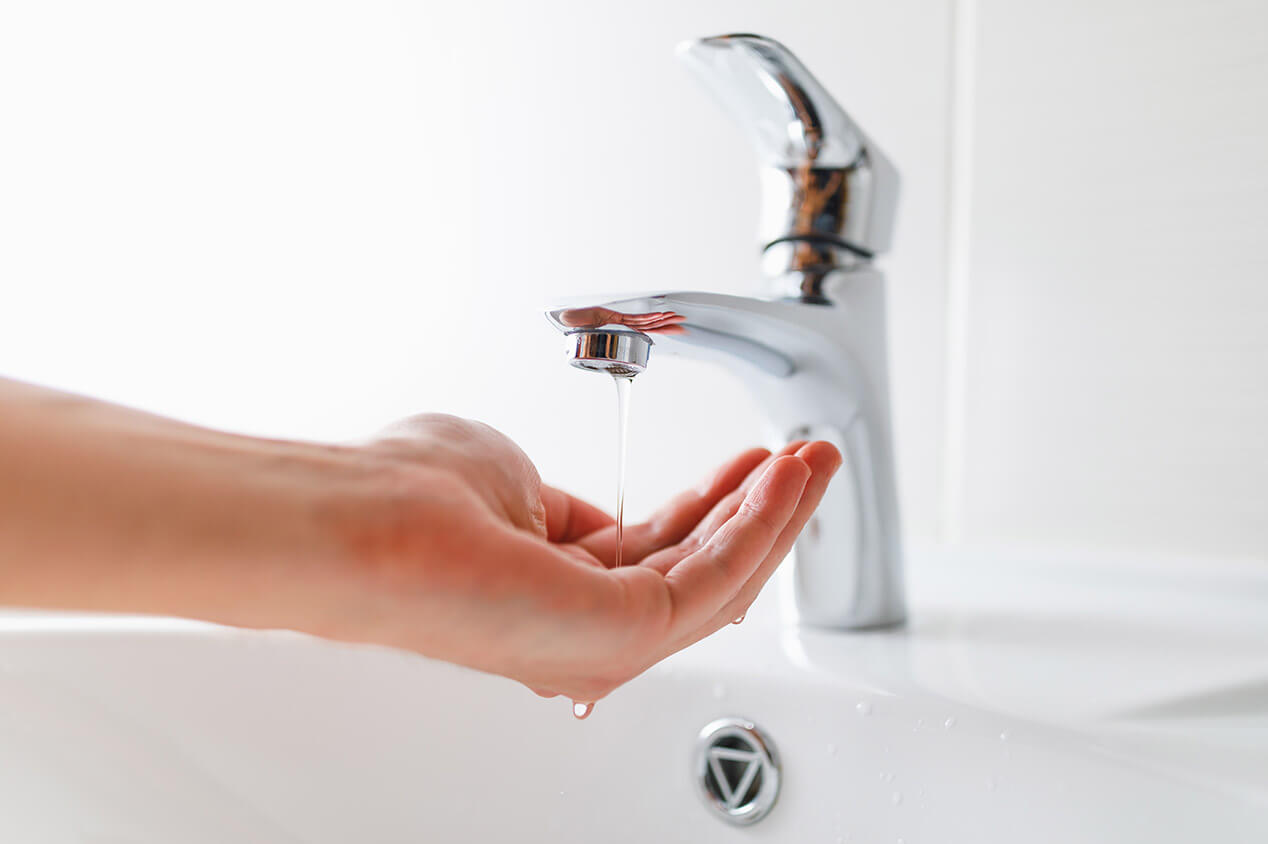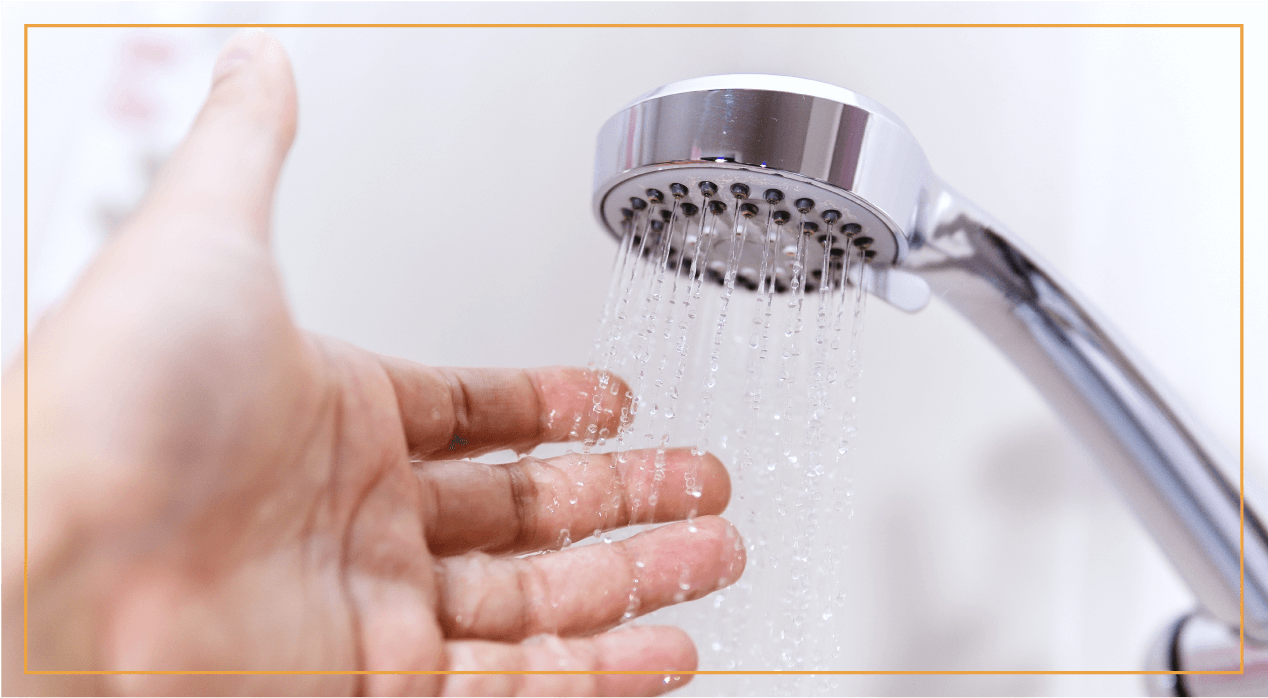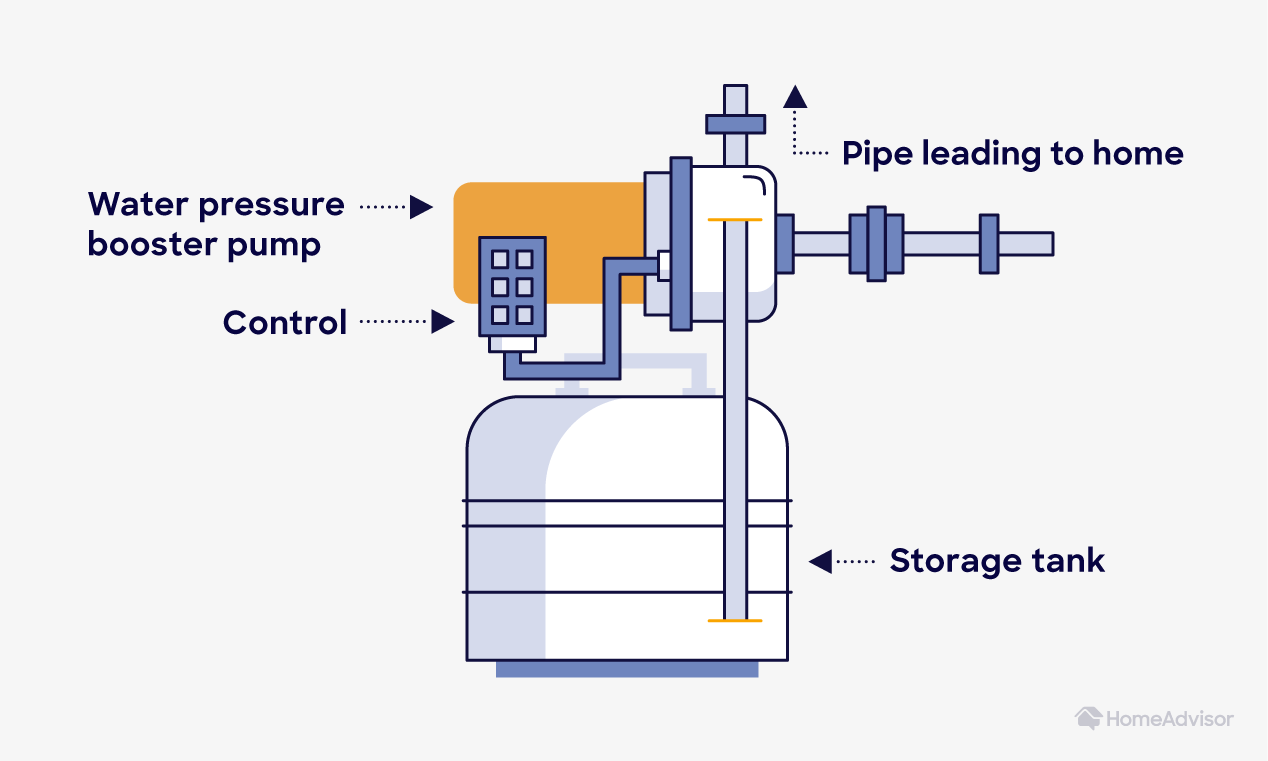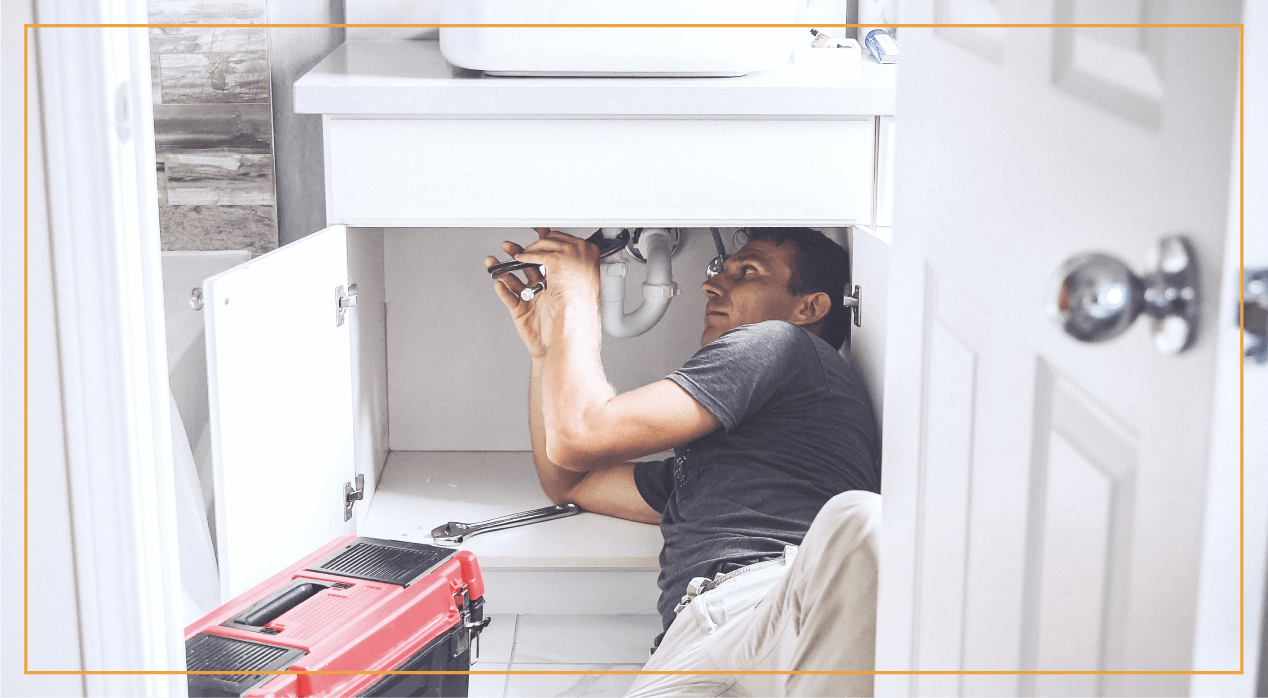
If you’ve ever experienced a sudden decrease in water pressure in your home, you know the unsettling feeling. Not only is it unsatisfying to take a shower, but low water pressure throughout the house can also be inconvenient when cleaning, cooking, watering plants and more.
Even if you’re familiar with the basics of your home’s water system, it’s not always easy to know when you need to involve a pro to increase your water pressure. Some people are overconfident and take on every project, while others are nervous to try anything on their own for fear of worsening any existing plumbing problems.
We understand the frustration of troubleshooting water pressure in your home since it’s such a common plumbing issue without a clear cause. Whether the issue is frozen pipes, hot water depletion or low pressure, it’s always best to be proactive. Use our guide to determine the severity of your plumbing issue and streamline your troubleshooting process, regardless of the situation.
On This Page:
- How To Test Your Water Pressure
- How To Increase Water Pressure in Shower
- How To Adjust the Pressure Reducing Valve
- When To Purchase a Water Pressure Booster
- When To Call a Plumber
- When To Call City Hall or the Water Department
1. How To Test Your Water Pressure
Testing water pressure yourself before calling a plumber can help you find the cause of the issue quickly. Low pressure can usually be remedied quickly at a minimal cost once you identify the issue. First, check your home’s water pressure to confirm that it’s lower than normal. Here’s how to get an accurate reading.
- Turn off any water being used around the house.
- Be sure the water shutoff valves near your meter are fully open.
- Connect a pressure gauge to an outside water spigot.
- Turn on the water and record the instant reading on the gauge.
- If you get a reading of 45 to 60 pounds per square inch (PSI), your water pressure throughout your house is at an ideal level. In this case, you can check the shower head or faucet where the issue originates.
If you don’t have a pressure gauge, you can also measure pressure by timing how long it takes to fill half a gallon using a bucket or even an empty milk jug or paint can.

|
Note: Don’t increase your water pressure any more than 80-85 PSI — not only is it unsafe, but it also considerably spikes water usage. |
2. How To Increase Water Pressure in Shower

If you realize after testing your shower’s water pressure that the issue is isolated to one shower in your home, you might be able to fix the problem on your own. Chances are that you haven’t replaced your shower head in over a year, and that could be contributing to low water pressure. By disassembling and thoroughly cleaning your shower head, you might be able to save yourself a phone call to the plumber.
Also, it’s recommended that you thoroughly clean or replace your shower head every 6 to 8 months, especially if you have hard water in your home. There are specific shower head brands like Waterpik that specialize in models for maximizing flow.
Here’s how to troubleshoot your shower head’s water pressure:
- Clear your shower’s aerator by soaking it in a cleaning agent like vinegar.
- Check your shower head’s water flow restrictor and consider removing it.
- Replace your shower head with a new, high-pressure model.
- Check if you have any faulty water pipe valves or other issues with your pipes.
- Adjust your home’s water pressure reducing valve.
- Purchase and install a water pressure booster.
- Consider elevating your water tank further above ground.
- Call your city’s water department to ensure it’s not a municipal issue.
Ready to start your plumbing repairs?
Find Pros3. How To Adjust the Pressure Reducing Valve

After ruling out issues like a clogged shower head or leaking pipes, adjusting your pressure-reducing valve (PRV) is the next quick-and-easy way to increase water pressure. If your home has a PRV, you would usually find it on the main water supply pipe. You’ll see a cone-shaped valve next to the water meter, close to where the main water pipe enters the house. Once you’ve identified it, follow these steps.
- Loosen the bolt’s locking nut located at the top of the valve.
- To raise pressure, turn the bolt slightly clockwise.
- Use a pressure gauge to measure how much you increased water pressure. Remember, you’re aiming for 45-60 PSI.
- If you accidentally make the pressure too high, simply turn the adjusting screw on the valve in a counterclockwise direction until it’s within the proper range.
- Repeat step 2 as necessary.
- Once you’ve achieved the proper water pressure, tighten the locknut to secure the valve.
In the case that your home doesn’t already have a PRV, you’ll need to hire a professional. Installing a water pressure reducing valve is a task best handled by an experienced plumber because of the tools and expertise required.
|
Tip: Replace pressure-reducing valves every 10-20 years to ensure that they function properly. |
When To Purchase a Water Pressure Booster

To increase the flow rate of the water in your home, you can also consider buying a water pressure booster pump. A water pressure booster consists of an electric pump that feeds water to a tank that keeps the water at the desired pressure. These pumps range from about $200 to $1,200 depending on the size, model and type. An experienced plumber can recommend which pump is best for your situation, and it’s usually best for a professional to attempt installation.
|
Tip: Keep in mind that water pressure boosters can potentially increase your monthly water and electricity bills. |
When To Call A Plumber

If your water pressure issue is a house-wide problem involving a pressure-reducing valve or water pressure booster, it’s time to call the best local plumber you can find. You’ll definitely want to work with an experienced professional. Knowing the right questions to ask plumbers is crucial if you haven’t already built a rapport with someone you can trust.
It pays to be proactive about issues related to water pressure and you’ll save money in the long run and prevent damages. After all, there may be issues with the city’s municipal water system that even a plumber can’t control.
When To Call City Hall or the Water Department

If your water pressure test reading is lower than 40 pounds per square inch throughout your entire home, there’s a chance your city or municipal water source could be the problem. City water systems are prone to leaks and corrosion, and they could be providing water to your home at a low pressure. Talk to your neighbors to see if they also have low water pressure. This can help you get to the root of the issue. Also, keep in mind that your well pump could also be causing issues if you rely on a private well as your water source.
If your house is on city water and you’ve ruled out other possible causes of low water pressure, ask your local water department for a pressure reading. Your local water department can tell you the recommended residential water pressure and help you figure out if there’s a problem on their end. When it comes to water pressure, gravity and distance are the two main factors that have negative impacts on the pressure level.
|
Tip: You might want a water pressure booster if your household water supply is far away or forced to travel uphill from the city or municipal water source, since this naturally decreases pressure. |
We hope the pointers we’ve shared in this article help guide you to a solution for increasing water pressure in your home quickly and efficiently. If you’re still struggling to correct your low water pressure problems, it may be time to hire a qualified plumber. It helps when you can compare costs of plumbers in an online directory of pre-screened pros with the expertise to efficiently fix water pressure.
 Best Styles of Utility Sinks
Best Styles of Utility Sinks  Best Kitchen & Bathroom Sink Styles
Best Kitchen & Bathroom Sink Styles  Clogged Drains
Clogged Drains  How to Find & Repair a Bathtub Leak
How to Find & Repair a Bathtub Leak  How to Hire a Qualified, Reasonable & Reliable Plumber
How to Hire a Qualified, Reasonable & Reliable Plumber 

Are You Familiar With This Topic? Share Your Experience.